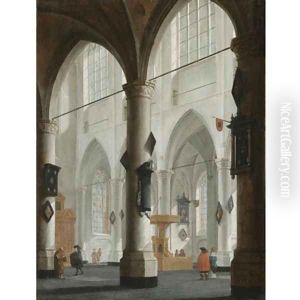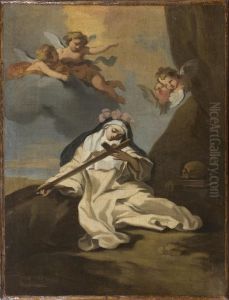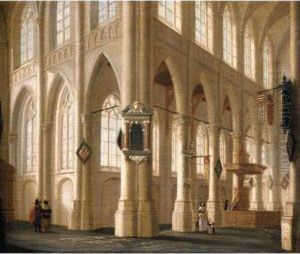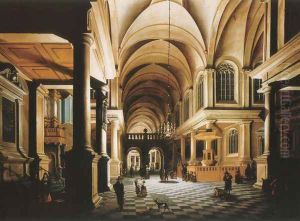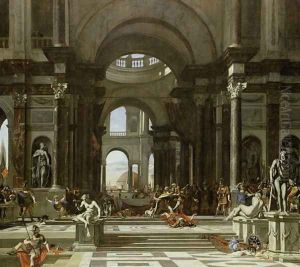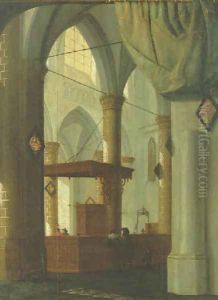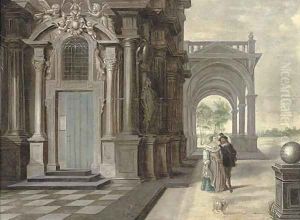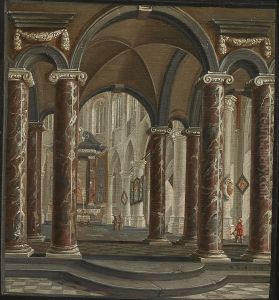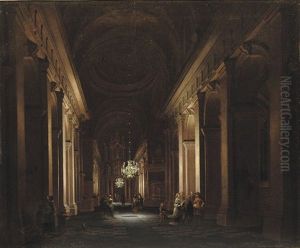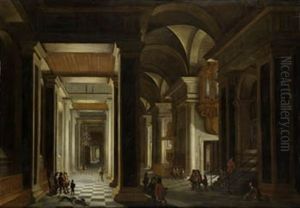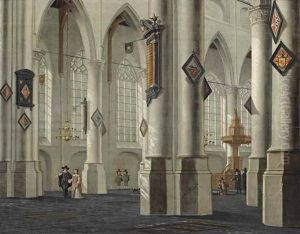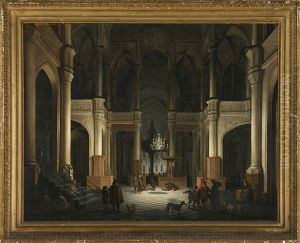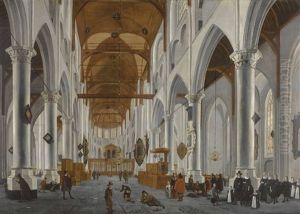Daniel de Blieck Paintings
Daniel de Blieck was a Dutch painter who is primarily known for his architectural paintings, particularly church interiors. Born around 1603 in Middelburg, in the Dutch Republic, de Blieck was part of the Dutch Golden Age, a period of great wealth and cultural achievement that fostered the talents of many artists.
De Blieck's work demonstrates a high degree of technical skill in rendering perspective and architectural detail. He was influenced by the earlier works of Dutch painters like Hendrick van Steenwijk the Younger and Emanuel de Witte, who were also known for their church interiors and attention to the play of light and shadow.
Though not as well-known as some of his contemporaries, de Blieck carved out a niche for himself with his depictions of grand, spacious interiors, often illuminated by soft, natural light that highlighted the buildings' geometric structures. His paintings capture the serenity and solemn atmosphere of these sacred spaces, inviting the viewer to a moment of quiet contemplation.
Little is known about de Blieck's life outside of his art. It is believed that he spent most of his life in Middelburg, and he was a member of the city's Guild of St. Luke, which was common for artists of the time. Records show that he was married and had children. His works have been preserved in various museums and collections, offering insight into the architectural styles and interior designs of Dutch churches during the 17th century.
Daniel de Blieck's contribution to Dutch painting lies in his ability to capture the essence of architectural space and light, creating a sense of reverence and tranquility in his works. He passed away around 1673, leaving behind a modest but nonetheless important body of work that continues to be studied and appreciated by art historians and enthusiasts.
